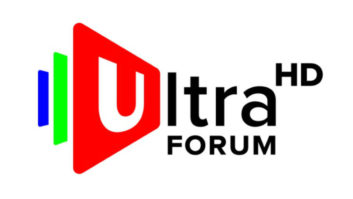Under the broad banner of ‘Ultra HD’ we have seen the commercial introduction of many improvements in video technology in recent years. Spatial resolution (4K), wide colour gamut (WCG), high dynamic range (HDR) and next-generation audio (NGA) all now feature regularly in consumer devices such as TVs, streamers and set-top boxes, as well as in services delivered by OTT providers and, albeit to a lesser extent, in linear broadcasts.
One enhancement which remains largely absent, however, is high frame rate (HFR). It’s worth remembering that the frame rates used in today’s TV and video services have hardly changed since the first broadcasts began in the 1930s. The story of why they were chosen is beyond the scope of this article, but suffice to say that the industry is still tied to what movie producers and electricity companies were doing nearly a hundred years ago.
HFR was first discussed as the early analogue HDTV standards were emerging back in the 1980s. The BBC’s R&D department began its own HFR work in 2008 and demonstrations were then given regularly at industry events before it ran the first large-scale broadcast trial at the 2014 Commonwealth Games in Glasgow.
Anyone who saw HFR demonstrations couldn’t fail to be impressed. The switch to 100 or 120 frames per second (fps), compared to today’s 50/60 standards, lends dramatic improvement to footage involving panning or rapid motion such as fast-moving sports, spinning wheels or even bouncing balls. An EBU study last year focused on material gathered at the 2018 European Athletics Championships in Berlin and included steeplechase, discus, 400m, long jump and javelin. The conclusions suggested that around 1.5 points of subjective quality (based on a 5 point scale) can be gained by offering 100fps compared to 50fps.
The EBU trial also suggested that HFR HD can offer similar quality to HFR 4K. HFR HD would also require lower bandwidth and be compatible with current HDMI standards. For this reason some observers suggest that broadcasters should offer HFR as an upgrade to their HD services before adding it to Ultra HD channels. The problem with this argument is marketing and packaging: pay-TV broadcasters would have to explain why Ultra HD doesn’t include the latest technology while ordinary HD does, especially when it makes HD look nearly as good as Ultra HD.
The advantages of HFR for sport seem clear, but perhaps less so for other genres of video and TV. One genre which merits its own separate frame rate discussion is movies, where there is an almost religious devotion to the century-old 24fps technique widely recognised as the cornerstone of the “film look.” In spite of occasional attempts to introduce faster frame rates (most famously by Peter Jackson with his Hobbit series) there are few signs that this will become a trend any time soon.
Broadcasters also face the challenge of delivering services to viewers with old, or even not-so-old, equipment which can’t handle new technologies. Very few TVs today are HFR-capable. Both DVB and ATSC have agreed dual-layer approaches to delivering SFR/HFR compatible signals, but it will be some years before both TVs and set-top boxes supporting these standards are being used in significant numbers. As usual OTT providers will have an advantage because they can introduce relatively cheap new devices or apps for subscribers who want to upgrade quickly, and can deliver both SFR and HFR versions of the same programme.
In conclusion, and unfortunately given its potential to enhance the experience, the majority of viewers are unlikely to see the benefits of HFR until later this decade. When it does happen expect sports broadcasters and rights holders to be frontrunners, and OTT providers rather than linear broadcasters to take the lead in distribution and delivery.
But as with everything these days, we have to qualify our projections with the added uncertainties posed by the pandemic. Its impact on the sports industry has already been devastating and may affect finances for a long time as clubs, competitions and rights holders adapt to the new world of social distancing. I have always felt that sports would be the primary driver of many innovations in video technology over the longer term, at both production and consumer levels, given its global impact and strong revenue streams. But the heightened uncertainties will require revised adoption models and timeframes to be developed across the value chain, and HFR may have to take its place in a long queue of competing business priorities.





